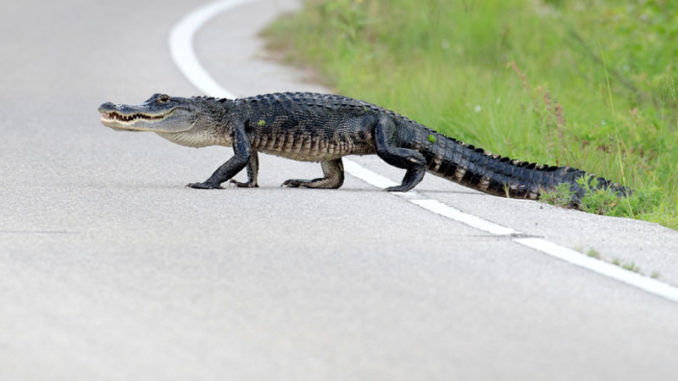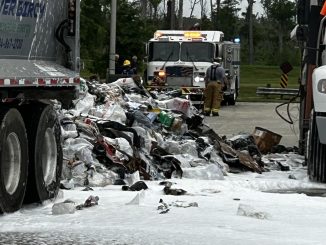
This time of year, it isn’t uncommon to see alligators out in yards or on the streets, an unofficial tradition brought on by seasonal conditions.
Just last month, an encounter between a St. Charles Parish deputy and an alligator in a Luling resident’s yard made news when it left the officer’s arm injured (he was treated and is expected to make a full recovery). But reports of dead alligators in major traffic roadways are even more common annually through social media – and for some residents, it seems like the numbers of those gators are climbing.
That may be true, according to nuisance officer Kenny Schmill, but not for the reasons many theorize.
Alligators tend to be seen out and about more often during the spring and summer, because it represents the time they’re moving to breed or relocate to a new habitat.
Schmill, who has been a “nuisance hunter” for 45 years, said he doesn’t necessarily know that there have been more calls placed to him this year than last. But on the whole, he says, the population of alligators is growing – and will continue to do so.
“It’s not the high river,” Schmill said of the notion the higher water is driving alligators into roadways. “The water really has nothing to do with it. When it rains three or four days straight, sometimes the thunder will get them to move and you find more. But in 2007 we had the worst drought in 100-something years, and I was still picking them up. They don’t really need water.”
Instead, if there is a greater number of alligators seen out and away from the water, he believes that may be because there simply are more alligators, period.
“They usually give out 32,000 tags to hunt them … but there might be 10 percent of those people, if that much, hunting them at all,” Schmill said. “There’s really been no money in it … who’s gonna go hunt them for $5 a foot? It’s not worth it.”
Supply and demand comes into play when alligators are being harvested by farmers.
“They’re raising 100,000 of them on the farm … people who hunt alligators can try to get people to buy the skins, but the farmers are raising them to seven feet, ideal size … they grow them faster, with no blemishes on them,” Schmill said. “So it is what it is. The number of them is just going to increase more and more … it’ll rise even more if nobody hunts them during the wild season.”
But outside of the farm, he estimates 20 percent of the gators he encounters were farm raised originally.
Alligators also tend to be among the top survivors in the animal kingdom, so their numbers aren’t exactly dwindling via natural causes.
“There’s a reason they’ve been here 300 million years, along with the roaches,” he said with a chuckle. “They survive.”
As for those surviving, live gators people come in contact with, Schmill said they’re more afraid of humans than the humans are of them.
But were one to feed them, it complicates matters.
“If you feed them, they’re just gonna come right back,” said Schmill, who responds to approximately 80 nuisance calls per year. “The ones I come get and put back, they’re just gonna come back.”
Alligator neighbors
- Alligators tend to be seen out and about away from the water more often during the spring and summer, because it represents the time they’re moving to breed or relocate to a new habitat.
- Kenny Schmill, a nuisance hunter for 45 years, believes alligator population is rising.
- Schmill believes part of that rising population comes from gators being farm bred.





Be the first to comment